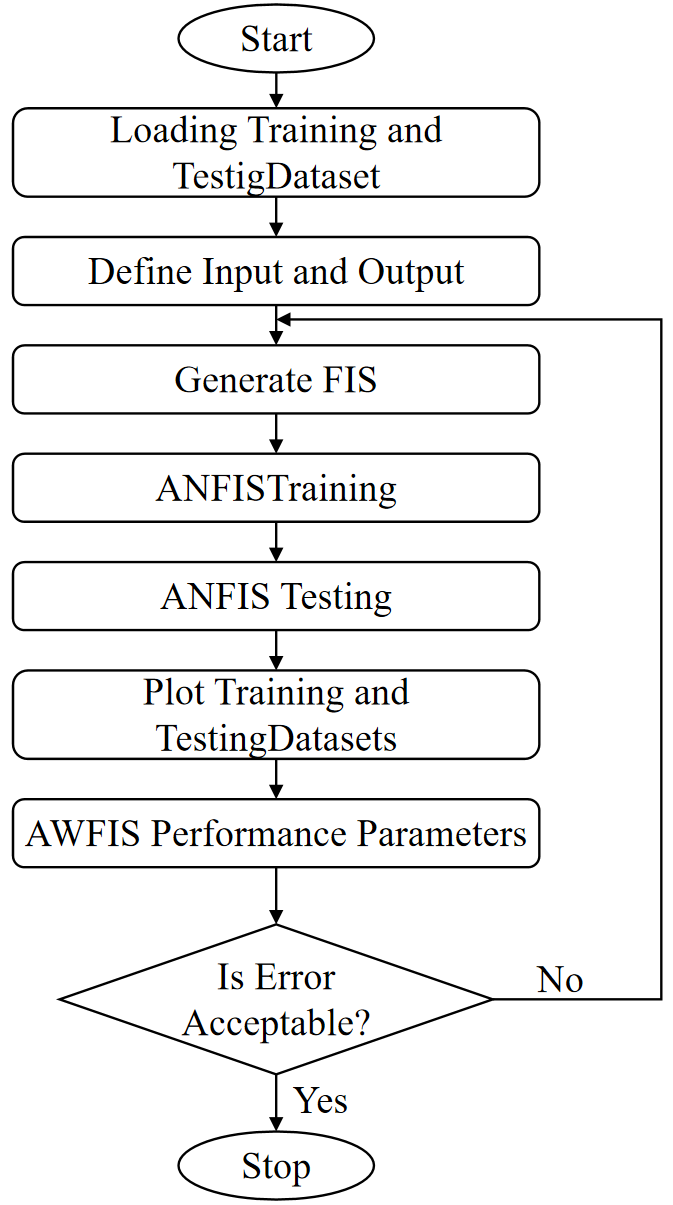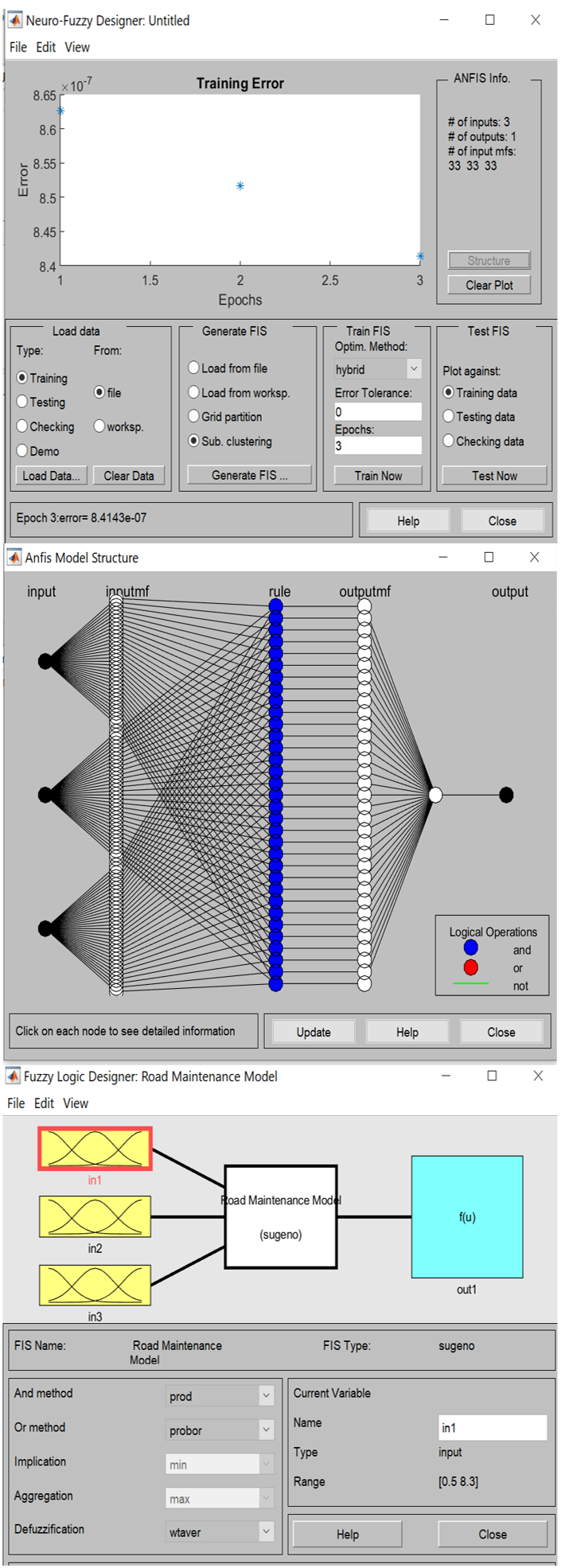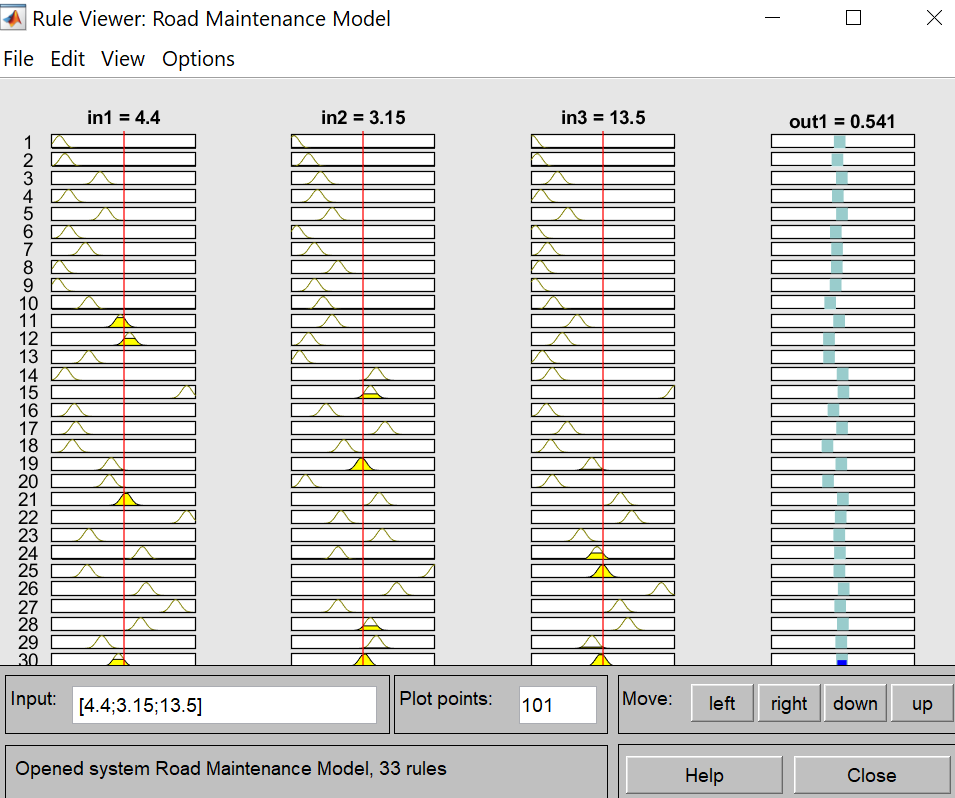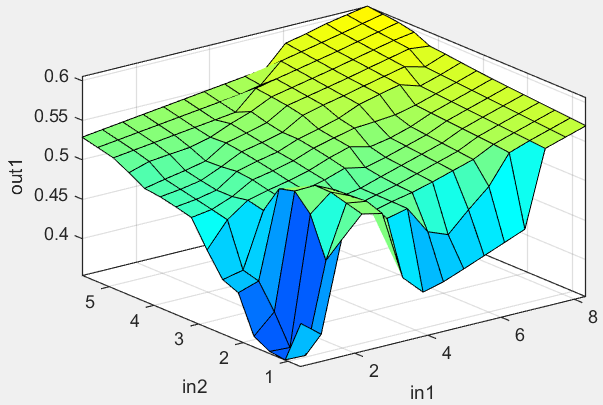Sustainable Intelligent Infrastructure
ISSN: request pending (Online) | ISSN: request pending (Print)
Email: [email protected]


Pavement structures are recognized as a significant component of any defined settlement which is an essential component that provides a smooth, safe and durable surface for vehicular and pedestrian traffic. This structure is a hard surface layer constructed over the natural soil for the purpose of providing a stable and even surface for vehicles. However, a properly designed pavement structure is crucial to ensure longevity and performance of the pavement. The pavement structure is divided into four different parts, the topmost layer also known as the wearing course provides a smooth riding surface for vehicles, resist pressure exerted by wheels and provides water-tight barriers against the infiltration of surface water [1]. The base and sub- base courses provide a medium to distribute the vehicular wheel load to the subgrade which is usually constructed with broken stones, stabilized soil, bricks, aggregate. This layer protects the pavement from frost action and improve the load supporting capacity of the subgrade by spreading the imposed load evenly to a large area [2]. Additionally, an improved transport infrastructure enables better access to isolated habitations or communities which increases the connectivity within the specific habitation, thereby increasing the economic growth with poverty alleviation. In developing countries like Nigeria, there is an emphasis on improving pavement infrastructure [3]. The conditions of a pavement are a crucial factor for a developing a country's economic, industrial, commercial, and entertainment sectors. pavement networks are the most widely used modes of transportation service in Malaysia and many other countries in the world. Pavements conditions are complex and are determined by various factors, including axle/wheel loading configurations, types of materials, the thickness of the layers, and environmental conditions. The severity level of distress varies based on the country, state, pavement category, or class, and some factors on a maintenance level. Furthermore, the maintenance strategies for flexible pavement and rehabilitation are two primary treatment techniques used to enhance the pavement condition, which work by retarding the pavement deterioration rate by repairing minor defects before they increase into significant defects [49].
The maintenance of pavement is a crucial aspect as it refers to the activities performed to preserve and extend the life cycle of a pavement, ensuring they remain functional and durable which enables safe transportation network within a given metropolis. The increasing rate of pavement deterioration is of great concern as it has an adverse effect on any nation's economy [4]. The need for pavement maintenance cannot be overemphasized as this addresses major concerns in our day-to-day vehicular movement which include, safety, low vehicle operating cost, smooth traffic flow, economic efficiency, aesthetics, comfort and environmental impact. Despite the diverse effort to improve and maintain pavement infrastructure, many areas continue to experience major challenges related to pavement safety, cost effectiveness. Poor or delay pavement maintenance often result to increase vehicle accident, increase in transportation cost and a great impact on environmental degradation [5]. However, Pavement deterioration is generally considered as the gradual decline in the condition of a pavement over time, resulting in a decrease in its functional and structural integrity. Deterioration in pavement structures can be caused by several factors, including environmental factors, traffic loading, materials factors, poor maintenance practices, non-adherence of design and specifications. Additionally, deterioration can be of different forms like, rutting, cracking, potholes, roughness and joint deterioration [6]. These deteriorated pavement structures can pose a high degree of consequences including safety risk, economic impact, environmental impact and social impact. Deterioration in pavement structures can significantly impact a country's GDP (Gross Domestic Product) through various direct and indirect ways including Increased transportation costs, Higher Vehicle Operating Costs, Increased Fuel Consumption, Logistics and Supply Chain Disruptions, Increased Government Spending on Repairs and Indirect impacts Reduced Productivity, Reduced Accessibility, Impact on Investment, Impact on Tourism and decline in economic activities [7].
In pavement construction project, from the inception stage of pavement construction deals with issues relating to the design of proper treatments for particular deficiencies and the impacts of traffic and environmental factors on pavement structures. The establishment of an effective and efficient pavement management system or a pavement has become a real challenge to the authorities, due to restrained resources. The accurate prediction of pavement performance is important for the efficient management of pavement infrastructure, and hence, pavement performance models form an essential input for a pavement management system [8]. Pavement management system requires predictive models to accurately forecast the performance of existing structures. Deterioration of pavement is due to factors such as age, traffic, material properties, pavement thickness, strength of pavement as well as sub-grade properties which affect the mechanical characteristics of a path [9]. A study carried out to explore the Exponential Logarithmic Models for Strength Properties of Lateritic Soil Treated with Cement and Rice Husk Ash as Pavement of Low-Cost pavements, to enhance the geotechnical properties of lateritic soil with constant proportions of 2, 4, 6 and 8% of cement and varying percentage of 4, 8,12, 16, 20, 24 and 28%, shows how the subgrade can be improved with cement mixed partially with risk husk [47]. The rate of pavement failures has led to the increasing demand for natural aggregates as a surge in their cost, making alternative materials like lateritic soil a viable option for low-cost pavement construction. Lateritic soil has been characterized as a poor construction material due to its low strength and high plasticity index. However, research has shown that the addition of cement or lime can significantly improve the strength and durability of lateritic soil. The compaction and strength characteristics of lateritic soil have been found to be influenced by the type and amount of stabilizer used. Predictive models have been developed to predict the behavior of lateritic soil under different conditions [48]. Research on the Application of Adaptive Neuro-Fuzzy Inference System (ANFIS) hybrids to predict coefficients of curvature and uniformity of treated unsaturated lateritic soil for sustainable earthworks indicates how ANFIS and its evolutionary hybrid techniques have shown their usefulness and flexibility in predicting stabilized unsaturated soil properties for sustainable earthwork design, construction and foundation performance monitoring, this could as well help burst the pavement structure foundation [10].
Moreover, Current pavement management practices often rely on empirical models or expert judgment for predicting pavement deterioration. These methods can be limited by their inability to effectively handle the complex and uncertain nature of the factors influencing pavement performance, such as traffic loading, environmental conditions, material properties, and construction quality. This leads to inaccurate predictions, inefficient maintenance planning, increased life-cycle costs, and potentially compromised pavement safety [11]. Therefore, there is a need for a more robust and accurate predictive model that can effectively capture the complex interrelationships among these factors and provide reliable predictions of pavement deterioration over time. This research is focused on the analysis and development of mathematical modelling in pavement maintenance with the aid of Adaptive Neuro-Fuzzy Inference System (ANFIS) for pavement maintenance that leverages machine learning techniques to enable proactive and cost-effective maintenance strategies focusing on the history of the pavement from pavement to be selected and its degree of failure ranging from its, area, width, length and volume of the selected failed pavement. The significance of this study lies in its potential to contribute to the development of more accurate and reliable methods for predicting pavement deterioration. The study's findings can have significant implications for transportation infrastructure management, safety, and sustainability. Over the past decades high level emphasis has been drawn directed toward rationalizing planning in the area of pavement.
The Adaptive Neuro-Fuzzy Inference System (ANFIS) is a smart computing technique that seamlessly integrates the abilities of neural networks and fuzzy logic which addresses the challenges of nonlinear problems and controlling complex systems [12]. The combination of artificial neural network (ANN) and fuzzy logic is known as adaptive neuro-fuzzy inference systems, in an attempt to emulate human cognition, complex data is been processed in way it can be influenced by human brain. This is crucial since most of the challenges in real world are nonlinear, achieving this depends on the independent data been processed to arrive at particular results. The neuro-fuzzy system also shares some advantages and characteristics with neural networks, such as its learning potential, assessment and optimization skills, and control systems. These facilitate the creation of a fuzzy-inference model from datasets using a unique learning approach motivated by learning metrics derived from neural networks [13].
Recent advancements in machine learning have revolutionized the field of pavement performance analysis. Traditional techniques have been supplemented by alternative approaches, leveraging the capabilities of artificial neural networks (ANNs) to analyze vast amounts of data [14, 15]. This shift enables transportation agencies to preserve their valuable pavement assets for extended periods, reducing maintenance costs. Recent studies have explored the application of deep learning methodologies, particularly neural networks (NNs) and recurrent neural networks (RNNs), to predict pavement deterioration. For instance, researchers have utilized back-propagation NNs to develop deterioration models for various pavement distresses, including rutting depth index and international roughness index (IRI). These studies have demonstrated that incorporating factors such as pavement pavement life, environmental conditions, and surface distress can significantly enhance the predictive performance of NN algorithms. Furthermore, research has shown that NNs can be effectively used to predict various pavement distresses, including cracking, rutting depth, IRI, condition rating index (CRI), visual condition index (VCI), and present serviceability index (PSI). Comparative studies have also indicated that NNs can outperform conventional statistical analysis methods in predicting pavement deterioration. These findings suggest that deep learning methodologies, particularly NNs, have the potential to improve the accuracy and reliability of pavement deterioration predictions [16, 17, 18, 19].
Numerous studies have employed fully connected neural networks to develop pavement performance prediction models [18, 19, 20, 21, 22]. These models have demonstrated improved accuracy compared to traditional regression models. However, existing models are often limited by their reliance on small datasets, which can result in poor generalization abilities. From relevant literature on research based on adaptive neuro fuzzy inference system for predicting flexible pavement distress in tropical regions. Data was collated from two types of flexible pavement and to obtain fuzzy inference system three ANFIS models were predicted with three different structures. Results shows that the predictions made using ANFIS indicate an accurate and closely approximate the target data [23]. Furthermore, the use of fully connected neural networks can oversimplify time series features, neglecting valuable temporal information. This can be problematic, as pavement performance is often influenced by a complex array of factors that evolve over time. ANNs have been successfully applied to solve complex problems in pavement engineering, construction engineering, and management [24]. Their ability to learn from data and identify patterns without requiring linearity assumptions makes them particularly suitable for modeling pavement performance [25]. Findings from research on the comparative study analysis of ANFIS and ANFIS-GA models on flow of vehicles at pavement intersections, the traffic data used for this research were obtained via up-to-date traffic data equipment, a total of eight hundred fifty traffic dataset were used for modelling. The result showed a good prediction accuracy [26].
Additionally, previous studies have primarily focused on selected aspects of the four key factors affecting pavement performance: pavement structure, load, climate, and maintenance or repair measures. This narrow focus may not capture the full range of influences on pavement performance. Research has demonstrated the effectiveness of ANNs in predicting pavement distress, including the present serviceability index (PSI) [27]. Studies have also shown that Artificial intelligence algorithms outperform traditional regression models in predicting complex engineering problems [25]. Thorough research has been carried the application of adaptive neuro-fuzzy inference system and fuzzy delphi technique to assess socio-economic impacts of construction of rural pavements. In conclusion, they noted that All-important findings of this study suggested that ANFIS models outperforms in comparison with the FDM models [28]. Also, the developed model framework (ANFIS) can quantify the qualitative information, which exclusively is of subjective nature, and can handle real-world problem associated with uncertainties, as well as, it is time-cost effective. It also adds up as a significant technique to the SEIA literature.
A comprehensive review of ANFIS applications in pavement engineering highlighted their potential in addressing new challenges and changing situations [29]. Subsequent studies have confirmed the superiority of ANFIS-based models in predicting PCI values compared to multivariate adaptive regression splines (MARS) and regression analysis [30]. The integration of ANFIS with falling weight deflectometer (FWD) data has been shown to accurately assess pavement structural conditions [31]. Moreover, machine learning techniques, including regression models, have been employed to diagnose pavement problems and recommend maintenance actions [32, 33].
Fuzzy inference system (FIS) has basically four components namely; fuzzification, fuzzy rule base, fuzzy output engine, and defuzzification as shown in Figure 1. The crisp input is fuzzified by the associated input membership function and submitted to fuzzy inference block, which is a decision-making unit and generates fuzzy output through fuzzy reasoning. Defuzzification block calculates crisp output from fuzzy output. Knowledge base, composed of data base and rule base, defines the associated membership function in fuzzification and defuzzification blocks, and provides fuzzy rules to fuzzy inference block. The decision-making unit performs the inference operations on the fuzzy rules. The fuzzy values within a fuzzy rule are aggregated with connective operators like intersection (AND), union (OR) and complement (NOT). Fuzzy inference engine takes into consideration all the fuzzy rules in the fuzzy rule base and learns how to transform a set of inputs to corresponding outputs. Defuzzification converts the resulting fuzzy outputs from the fuzzy inference engine to a crisp numerical number. It also involves the interpretation of the logical implications in outputs converted from the fuzzy domain to the real domain [34, 35, 36].

The fuzzification component in Figure 1 requires precise definition of membership functions to map crisp inputs to linguistic terms. As illustrated in Figure 2, these functions quantify the degree of truth for fuzzy sets.
The membership function of a fuzzy set is a generalization of the indicator function for classical sets. In fuzzy logic, it represents the degree of truth as an extension of valuation and specifies the degree to which a given input belongs to a set. Membership functions are used in the fuzzification and defuzzification steps of a fuzzy logic system to map the non-fuzzy input values to fuzzy linguistic terms and vice versa. Membership functions characterize fuzziness (i.e., all the information in fuzzy set), whether the elements in fuzzy sets are discrete or continuous, as shown in Figure 3. Membership functions can be defined as a technique to solve practical problems by experience rather than knowledge [37]. The membership function which represents a fuzzy set is usually denoted by . For an element of , the value is called the membership degree of in the fuzzy set . The membership degree quantifies the grade of membership of the element to the fuzzy set . The value 0 means that is not a member of the fuzzy set; the value 1 means that is fully a member of the fuzzy set. The values between 0 and 1 characterize fuzzy members, which belong to the fuzzy set only partially [38, 39].


Fuzzification is the process of mapping crisp input values into linguistic terms or fuzzy sets. Each input variable is associated with one or more membership functions that represent the degree of membership of the input in each linguistic term. These membership functions define the shape of the fuzzy sets, usually in terms of triangular or Gaussian distributions. The degree of membership ranges from 0 to 1, indicating the strength of the input's association with a particular linguistic term [39, 40].
The inference engine processes the fuzzy rules to determine the output's fuzzy membership grades. Fuzzy rules consist of antecedents (input conditions) and consequents (output conditions). Each rule evaluates the membership grades of the input variables based on the defined membership functions. The AND and OR operations combine the membership grades within a rule, while implication methods, like Mamdani or Sugeno, determine the output's fuzzy membership [38, 40].
Defuzzification is the final step where the fuzzy output is converted into a crisp value. This process involves aggregating the fuzzy outputs from all rules to compute a single, crisp output value. The defuzzification methods include the Center of Gravity (centroid) method, weighted average method, or other techniques tailored to the specific problem [40].
Gaussian function which can be referred to as bell curve or normal distribution, that describes the probability of distribution mathematically. In the context of ANFIS, the Gaussian function is used as a membership function to define the degree of membership of an input variable to a fuzzy set defined by a central value m and a standard deviation k > 0. The smaller k is, the narrower the "bell" is [41].

The Adaptive Neuro-Fuzzy Inference System (ANFIS) is a hybrid model that combines fuzzy logic and neural networks to create a powerful framework for approximating complex relationships between input and output variables [42]. The ANFIS architecture consists of several interconnected components: fuzzification, inference engine, and defuzzification. An explanation of each component is presented below. The methodology flowchart in presented in Figure 4.

The data for this study were obtained from the Cross River State Road Maintenance Agency, focusing on pavement maintenance activities in four distinct areas: Marian Road, Atekong, State Housing, and Douglas Street. A comprehensive dataset was compiled, encompassing road surface conditions, traffic volume, and environmental factors. As demonstrated by Okonkwo et al. [48], soil stabilization models can effectively capture the nonlinear behavior of pavement materials, which aligns with the ANFIS approach adopted in this study. The dataset spanned a significant period, allowing for the analysis of trends and patterns in pavement deterioration.
Marian pavement, one of the areas under study, is a major arterial route that experiences high traffic volumes, particularly during peak hours. The pavement surface condition data revealed a significant presence of potholes, cracks, and rutting, which can be attributed to the heavy traffic loading and inadequate drainage. Atekong, another area of focus, is characterized by a mix of residential and commercial properties. The pavement maintenance data indicated a relatively lower level of deterioration compared to Marian pavement, likely due to the lower traffic volumes and better drainage conditions. State Housing and Douglas Street, the remaining two areas under study, presented distinct pavement maintenance challenges. State Housing, with its high population density, experienced significant pavement deterioration due to heavy pedestrian and vehicular traffic. In contrast, Douglas Street, a relatively low-traffic area, showed fewer signs of pavement distress.
The dataset from these four areas provided valuable insights into the factors contributing to pavement deterioration in Cross River State. By analyzing the data, this study aimed to identify the most critical factors influencing pavement maintenance needs and develop a predictive model to inform proactive maintenance strategies. The findings of this study can contribute to the development of more effective pavement maintenance plans, reducing the economic and social impacts of pavement deterioration in Cross River State.
To gather primary data on pavement conditions, maintenance activities, and related factors, field observations, measurements, and surveys were conducted in the four selected areas of Marian pavement, Atekong, State Housing, and Douglas Street. This primary data collection exercise was designed to provide firsthand information on the current state of the pavements, maintenance practices, and environmental factors influencing pavement conditions.
Trained field observers were deployed to the four study areas to collect data on pavement conditions, including the presence and severity of potholes, cracks, rutting, and other forms of distress. The observers also noted the type and condition of pavement surfaces, drainage systems, and other infrastructure. These observations were recorded using a standardized data collection form.
To supplement the field observations, measurements were taken to quantify various aspects of pavement conditions. These measurements included: pavement surface roughness and evenness, Pothole depth and diameter, Crack width and length, Rutting depth and width. These measurements were taken using specialized equipment, such as roughness meters and crack width gauges.
Surveys were conducted among pavement users, including motorists, pedestrians, and cyclists, to gather information on their perceptions of pavement conditions and maintenance activities. The surveys were designed to capture data on factors such as, pavement surface quality, Safety concerns, Maintenance frequency and effectiveness, Environmental factors influencing pavement conditions. The surveys were administered using a combination of paper-based questionnaires and online surveys.
To ensure the quality and reliability of the primary data collected, a series of quality control measures were implemented. These measures included: Training field observers and survey administrators, using standardized data collection forms and equipment, Conducting regular data validation and verification exercises. However, collecting primary data through field observations, measurements, and surveys, this study aimed to gather accurate and reliable information on pavement conditions, maintenance activities, and related factors in the four selected areas.
In addition to the primary data collected from the field, existing records and documents from the Cross-River State pavement Maintenance Agency were obtained to provide a comprehensive understanding of the pavement maintenance activities in the state. These secondary data sources included maintenance logs, repair histories, and traffic volume records.
The maintenance logs provided a detailed record of the maintenance activities performed on the pavements in the state. The logs included information on the type of maintenance performed, the date and time of maintenance, and the personnel involved. The logs also included information on the materials used for maintenance, such as asphalt, concrete, and aggregate.
The method that was employed for this study include field observation which entails a visit to various site to observe pavement conditions, maintenance activities and other factors. pavement condition parameters, such as roughness, potholes, and surface distress were measured with the appropriate equipment. The agency records and document were reviewed to gather historical data on maintenance activities.
A robust ANFIS model was developed to predict pavement deterioration using the compiled database. The dataset was randomly partitioned into three subsets: training (70%), validation (15%), and testing (15%) datasets. This stratification enabled the evaluation of the model's performance and its ability to generalize.
Prior to model development, the collected data underwent rigorous statistical analysis to ensure consistency and reliability. Descriptive statistics were computed for each variable across the training, validation, testing, and entire datasets. This step facilitated an in-depth understanding of the data distribution and informed the subsequent model development process [41].
The ANFIS model structure represented in Figure 5 integrates both nodes and rules to facilitate the modeling process. The nodes serve as membership functions (MFs), while the rules define the relationships between input and output variables. In developing an ANFIS model, various types of MFs can be employed. These include triangular, trapezoidal, Gbell, Gaussian curve, Gauss2, pi-shaped curve, difference between two sigmoidal, and product of two sigmoid MFs. The selection of an appropriate MF type is crucial for optimal model performance [41]. The ANFIS model relies on feature extraction rules applied to the input-target data stored in a fuzzy-based rule system. This system utilizes the 'IF-THEN' rule, where each rule consists of antecedents (IF part) and consequents (THEN part). A first-order Sugeno model is commonly employed to represent the ANFIS architecture, as illustrated in Figure 6. Two fuzzy IF-THEN rules are defined as follows: Rule 1: IF (input 1 is MF1) AND (input 2 is MF2), THEN (output is a linear combination of inputs) [39]. The parameters for the ANFIS network are shown in Table 1.

| Parameters | Functions |
|---|---|
| FIS type | Sub clustering |
| Optimization method | Hybrid |
| Membership function type | Gaussmf |
| Implication method | Minimum |
| Aggregation | Maximum |
| Defuzzification | Wtaver |
| AND method | Prod |
| OR method | Probor |
| Squash factor | 1.0 |
| Accept factor | 0.5 |
| Reject factor | 0.1 |
| Range of influence | 0.1 |
| Error tolerance | 0 |
| Epoch | 3 |
The performance of the developed ANFIS model was comprehensively evaluated to verify its capability in accurately estimating and predicting response parameters. The evaluation was based on statistical performance metrics, specifically loss function parameters, to assess the model's prediction accuracy. The Root Mean Square Error (RMSE) was employed as a primary performance criterion to evaluate the model's predictive capability. RMSE is a widely accepted metric in literature for assessing the accuracy of predictive models, including ANFIS. By analyzing the RMSE value, the model's performance was quantitatively evaluated, and its ability to accurately predict response parameters was confirmed. Mathematically, it is presented below:
where is the experimental value, is the model prediction, and is the number of observations [43].
The ANFIS model shown in Table 2 has a total of 33 fuzzy rules, which is a moderate number indicating a reasonable complexity level. The number of nodes 270, linear and nonlinear parameters of 132 and 198 suggest a decent model structure. The model has been trained on a dataset with a certain number of input-output pairs, which is essential for learning the relationships between variables. The initial training performance indicated by values is capturing some patterns in data. The minimal training RMSE of 0.851716 represent the best achievable performance of the model on the training data. This value indicates that the model is capable of explaining a significant aspect of the variance in the data and a coefficient of determination of 0.9998 [44].
| Parameter | Value |
|---|---|
| Number of nodes | 270 |
| Number of linear parameters | 132 |
| Number of nonlinear parameters | 198 |
| Total number of parameters | 330 |
| Number of training data pairs | 65 |
| Number of checking data pairs | 0 |
| Number of fuzzy rules | 33 |
| Start training ANFIS | (a) 0.862638, (b) 0.851716 |
| Minimal training RMSE | 0.851716 |
| 0.9998 |
Figure 7 indicates how the Adaptive Neuro-Fuzzy Inference System (ANFIS) model was formulated for the prediction of pavement deterioration based on a dataset discussed in the study methodology comprising of three input variables length, width, and area of the four selected pavements. Additionally, an output variable which was utilized was the volume of the section's remedies. The model consisted of 33 fuzzy rules, which were optimized during the training process [23].

The ANFIS performance was evaluated using the mean root squared error (MRSE) metric and coefficient of determination. The MRSE value of 0.851716 and R2 value of 0.9998 indicates that the model accurately predicted pavement deterioration. This result indicates that the ANFIS model was able to capture the complex relationships between the input variables and the output variable. The ANFIS model optimization of the 33 fuzzy rules during the training process showed a crucial role in the ANFIS model performance. The fuzzy rules allowed the model to handle the uncertainty and non-linearity associated with pavement deterioration. The optimization process ensured that the fuzzy rules were tuned to capture the underlying patterns in the data. However, variable selection was based on their relevance to pavement deterioration, these include length, width and area. While the selection of the output variable (volume) was based on its importance in pavement maintenance [35].
Figure 8 illustrates the three input variables—length, width, and area—and their corresponding membership functions. A membership function defines the fuzzy sets for each input variable, allowing the ANFIS model to reason about the inputs within a fuzzy logic framework. The parameters of each membership function can be adjusted during the training process to optimize the model's performance [45].

The values displayed on Figure 9 shows the input and output variables of a specific rule, these values represent conditions, where the inputs in1=4.4 is representing a moderate length of the pavement. This input value suggests that the pavement section is of moderate length, which may be a contributing factor to its deterioration., in2=3.15 represent a relatively low maintenance history of the width This input value indicates that the width of the pavement has a relatively low maintenance history, which may have contributed to its current state of deterioration. However, in3= shows a high level of deterioration. This input value indicates that the pavement section has already undergone high rate of deterioration, which may require immediate attention.

The output value out1=0.541, indicates the predicted pavement deterioration level for this specific condition. The value of 0.541 suggests a moderate level of deterioration, potentially indicating the need for maintenance or repairs [23, 46].

The Figure 10 is a visualization tool that displays the relationship between the inputs and output variables of the ANFIS model. The X and Y axis represents the first and second variable, this is divided into 15 mesh point, which means the input range is discretized into 15 equal intervals and each mesh corresponds to either in1 or in2 variables. However, the Z represent the predicted output variable, the surface plot shows the predicted values of out1 for each combination of in1 and in2. In general, the first and second input variables (in1 and in2) are represented by X and Y axis of the plot. The input range is categorized into 15 equal intervals, creating a meshgrid of 15x15 points. Each mesh point corresponds to a specific combination of in1 and in2 values, allowing for the examination of the model's behavior across the entire input space. Finally, The Z-axis represents the predicted output variable (out1), which is plotted as a surface above the meshgrid. The surface plot shows the predicted values of out1 for each combination of in1 and in2, providing a visual representation of the complex relationship between the input and output variables [41].
The ANFIS model demonstrated a strong ability to predict pavement deterioration, with a root mean squared error (RMSE) of 0.851716 and a remarkable R2 value of 0.9988. this indicates a high degree of accuracy in predicting pavement condition based on input variables. The output and input variable were effectively utilized by the ANFIS model to capture the complex relationships between these factors and pavement deterioration. The ability for the model to handle nonlinear relationships and proper interactions between variables showed its effectiveness in the analysis. This was actualized by proper utilization of the strength in neural networks and fuzzy logic. However, the ANFIS model provided a robust, precise and accurate predictive model for pavement deterioration which can be harnessed by engineers and researchers in exploring the geotechnical properties of deteriorated pavement.
Recommendations
The construction industry should employ the use of ANFIS to optimize pavement maintenance schedules and reduce the need for costly repairs.
Investigate the use of other machine learning techniques, such as deep learning or transfer learning, to improve the accuracy of pavement deterioration predictions.
Develop a real-time pavement monitoring system that utilizes ANFIS and other sensors to provide timely alerts for maintenance and repair and to employ ANFIS to optimize pavement maintenance schedules and reduce the need for costly repairs.
 Copyright © 2025 by the Author(s). Published by Institute of Emerging and Computer Engineers. This article is an open access article distributed under the terms and conditions of the Creative Commons Attribution (CC BY) license (https://creativecommons.org/licenses/by/4.0/), which permits use, sharing, adaptation, distribution and reproduction in any medium or format, as long as you give appropriate credit to the original author(s) and the source, provide a link to the Creative Commons licence, and indicate if changes were made.
Copyright © 2025 by the Author(s). Published by Institute of Emerging and Computer Engineers. This article is an open access article distributed under the terms and conditions of the Creative Commons Attribution (CC BY) license (https://creativecommons.org/licenses/by/4.0/), which permits use, sharing, adaptation, distribution and reproduction in any medium or format, as long as you give appropriate credit to the original author(s) and the source, provide a link to the Creative Commons licence, and indicate if changes were made. Sustainable Intelligent Infrastructure
ISSN: request pending (Online) | ISSN: request pending (Print)
Email: [email protected]

Portico
All published articles are preserved here permanently:
https://www.portico.org/publishers/iece/